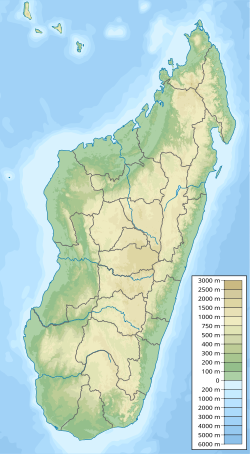| Kandreho Formation | |
|---|---|
| Stratigraphic range: Toarcian ~ | |
| Type | Geological formation |
| Lithology | |
| Primary | Marly limestone |
| Location | |
| Coordinates | 17°30′S45°18′E / 17.5°S 45.3°E |
| Approximate paleocoordinates | 22°18′S24°00′E / 22.3°S 24.0°E |
| Region | Mahajanga Province |
| Country | Madagascar |
| Extent | Mahajanga Basin |
| Type section | |
| Named for | Kandreho |
| Named by | Geiger |
| Year defined | 2004 |
Outcrop of the formation in Madagascar | |
The Kandreho Formation is an Early Jurassic (middle or late Toarcian) geological formation of the Mahajanga Basin of Madagascar. The marly limestones of the formation were deposited in a subtidal lagoonal environment. The formation overlies the Bouleiceras and Spiriferina beds of the early Toarcian and has been correlated to the Marrat Formation of Saudi Arabia. [1] Fossils of the marine teleosaurid thalattosuchian as well as bivalves and the ammonite Nejdia have been found in the formation. [2] [3] The name Kandreho Formation was proposed by Geiger in 2004. [4]
